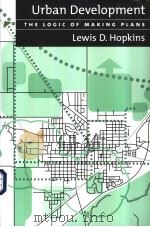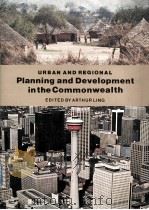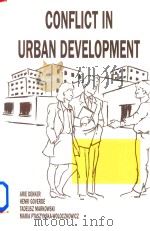《NEIGHBORHOODS AND URBAN DEVELOPMENT》
| 作者 | ANTHONY DOWNS 编者 |
|---|---|
| 出版 | THE BROOKINGS INSTITUTION |
| 参考页数 | 189 |
| 出版时间 | 没有确切时间的资料 目录预览 |
| ISBN号 | 无 — 求助条款 |
| PDF编号 | 819597948(仅供预览,未存储实际文件) |
| 求助格式 | 扫描PDF(若分多册发行,每次仅能受理1册) |
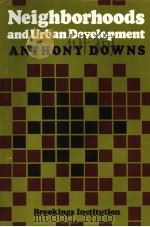
1. Introduction and Main Themes1
The Nature of Neighborhoods1
Problems Arising from Neighborhood Change2
Exploring Future Policies Concerning Neighborhoods4
The Necessity for Neighborhood Deterioration5
Federal and State Policies8
City Policies9
Neighborhood Policies10
The Boundaries of This Study11
2. What Is a Neighborhood?13
Conclusions from This View of Neighborhoods15
Nonmarket Linkages and Self-Reinforcing Expectations16
Organizations within Neighborhoods19
3. Neighborhood Stability24
Factors in Population Mobility27
Variations in Mobility Rates31
Population Mobility and Neighborhood Stability33
4. Urban Growth and Neighborhood Change37
The Trickle Down Process and Urban Growth37
The Effect of the Trickle Down Process on Neighborhoods41
Spatial Hierarchy of Neighborhoods44
Differential Code Enforcement by Neighborhood48
Continuous Neighborhood Change49
Some Motives for Socioeconomic Segregation50
Differential Benefits to Households52
The Slowing of Urban Growth58
5. Stages of Neighborhood Change61
Agents of Neighborhood Change62
Stages of Change in Decline and Revitalization63
Intensified Land Use67
Neighborhood Life Cycles68
Housing Construction and Neighborhood Change70
6. Neighborhood Revitalization72
The Nature of Revitalization72
Causes of Revitalization75
Benefits and Costs of Revitalization81
Displacement84
7. Neighborhood Racial Change86
The Arbitrage Model86
Differential Incomes90
Racial Prejudice91
Microdynamic Illustrations of Racial Change93
The Negative Effects of Racial Change96
Stable, Racially Integrated Neighborhoods98
Hispanics in the United States100
8. Future Urban Developments Influencing Neighborhoods103
Demographic and Economic Trends103
High Gasoline Prices107
Neighborhood Decline110
Neighborhood Redevelopment113
9. Limitations on Future Neighborhood Policies116
Rhetorical versus Real Possibilities116
The Proper Institutional Level for Action118
Strategies119
Personal Values and the Limits of Public Policies119
10.Coping with Poverty124
Redistributing Incomes within Metropolitan Areas125
Deconcentrating the Poor126
Improving Access to Housing Credit129
Improving Public Schools131
Additional Recommendations134
11.Balancing Suburban Growth and Central City Revitalization136
Effects of Suburban Growth upon Central Cities136
Stimulating Central City Revitalization by Limiting Suburban Growth139
Achieving Fairer Distribution of the Social Costs of Suburban Growth141
Providing More Accessible Mortgage Financing for City Revitalization144
Balancing Neighborhood Revitalization and Displacement146
Encouraging Suburban Growth to Reduce Housing Prices150
Conclusion151
12.Physically Improving Central City Residential Neighborhoods153
Available Resources153
Strategies for Spatially Allocating Resources155
Treatment by Neighborhood159
Coping with Housing Deterioration163
Housing Code Enforcement164
Assessment Practices168
Traffic and Transportation169
Conclusion171
13.Focusing on Activities within Neighborhoods172
Some Attitudes of Neighborhood Residents and Their Implications172
Personal Values and Participation in Local Organizations174
Raising Neighborhood Consciousness176
Transferring Government Authority to Neighborhoods177
Transferring Delivery of Some Services to the Neighborhood Level179
Overcoming Neighborhood Resistance to the Location of Key Public Facilities182
Conclusion184
Index185
《NEIGHBORHOODS AND URBAN DEVELOPMENT》由于是年代较久的资料都绝版了,几乎不可能购买到实物。如果大家为了学习确实需要,可向博主求助其电子版PDF文件(由ANTHONY DOWNS THE BROOKINGS INSTITUTION 出版的版本) 。对合法合规的求助,我会当即受理并将下载地址发送给你。
高度相关资料
-
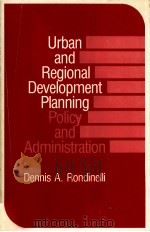
- Urban and regional development planning : policy and administration
- 1975 Cornell University Press
-

- NCHRP Synthesis273 Project Development Methodologies for Reconstrution of Urban Freeways and Express
-
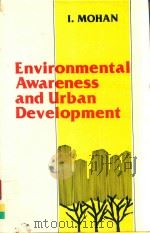
- ENVIRONMENTAL AWARENESS AND URBAN DEVELOPMENT
- 1988 ASHISH PUBLISHING HOUSE
-

- COMMERCIAL DEVELOPMENT AND URBAN CHANGE IN SUNG CHINIA(960-1279)
- 1971 DEPARTMENT OF GEOGRAPHY UNIVERSITY OF MICHIGAN
-
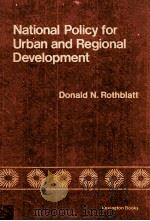
- NATIONAL POLICY FOR URBAN AND REGIONAL DEVELOPMENT
- 1974 LEXINGTON BOOKS
-

- URBAN DEVELOPMENT IN INDIA
- 1978 ABHINAV PUBLICATIONS
-

- The Politics of Urban Development in Singapore
- 1972 CORNELL UNIVERSITY PRESS
-

- PLANNED URBAN DEVELOPMENT AND ADMINISTRATION
- 1983 NATIONAL
-

- Real estate and urban development
- 1977 REAESUR
-
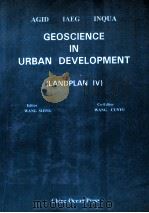
- GEOSCIENCE IN URBAN DEVELOPMENT
- 1994 CHIAN OCEAN PRESS
提示:百度云已更名为百度网盘(百度盘),天翼云盘、微盘下载地址……暂未提供。➥ PDF文字可复制化或转WORD


